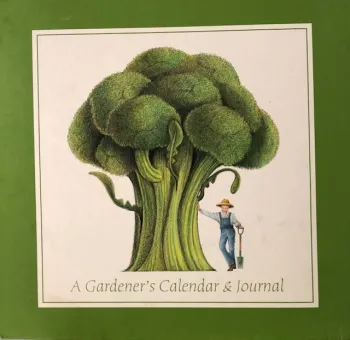A Garden Journal Can Be A Useful Tool
Do you keep notes on how your garden performs each year to help you remember what is working well and what is not? Maybe this is your year to start. Barb Fick, Home Horticulturist with the Oregon State University Extension Service, explains that there are many good reasons to keep a garden journal. A blank bound book or a ring binder filled with loose-leaf paper can make a great place to record what you do in your garden.

Having a year-to-year record of where things are planted will also help with crop rotation, which is the system of changing the types of vegetables and flowers planted each year in each garden location. Rotation discourages depletion of soil nutrients, pest outbreaks and soil borne disease. Without a good record of where each crop is planted however, it's easy to forget where a particular species may have been growing last year.
By recording each year's seasonal “landmarks” such as rainfall patterns and amounts, unusual weather such as rapid temperature changes, the date of the first daffodil bloom, the first frost and the arrival of the first hummingbird, you will be able to compare different years to one another and relate them to plant performance.
Fick writes that it's a good idea to record pest outbreaks in relation to what plants they are found on. It's also very important to include any control measures used, and the success or failure of those measures. This information will help you prepare for the same problem next year, or may help you decide not to grow that particular species next year. Also, record the appearance and activities of beneficial insects and their host plants. For instance, you may record that aphids on your rose bushes were brought under control by ladybird beetles and other natural enemies by mid-April. This information might help you make a decision on whether to use an insecticide to control the aphids the following year, or to let nature take its course.
To keep track of the amount of money spent on seed, fertilizer and garden tools, a journal can come in handy. It can also be a good way of keeping track of yields and a safe place to record the identities of the things you plant. You can keep a good record of species and varieties simply by taping the plant identification tags onto your journal pages, along with the planting dates and garden locations.
Fick says that along with being very practical, a garden journal can give you a feeling of accomplishment. When you add up the many hours spent, the numbers of species planted and the various garden methods used, most gardeners will feel proud of what they've done.
